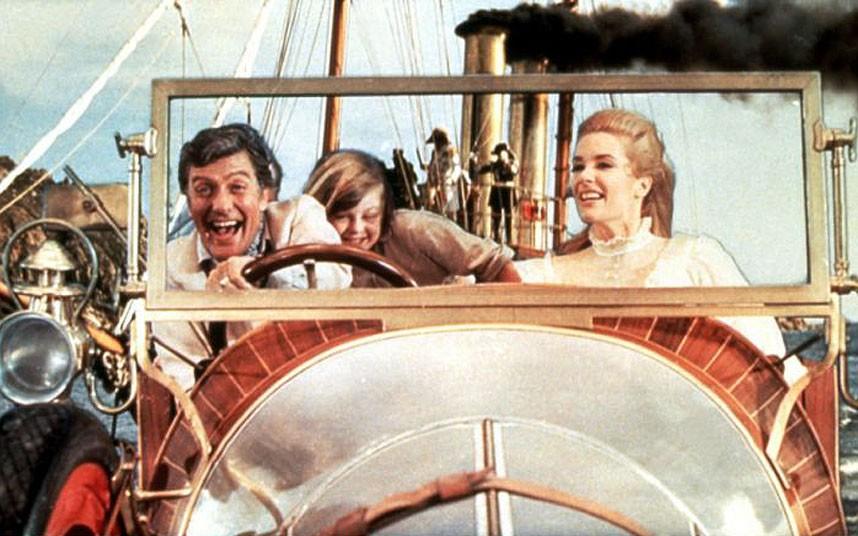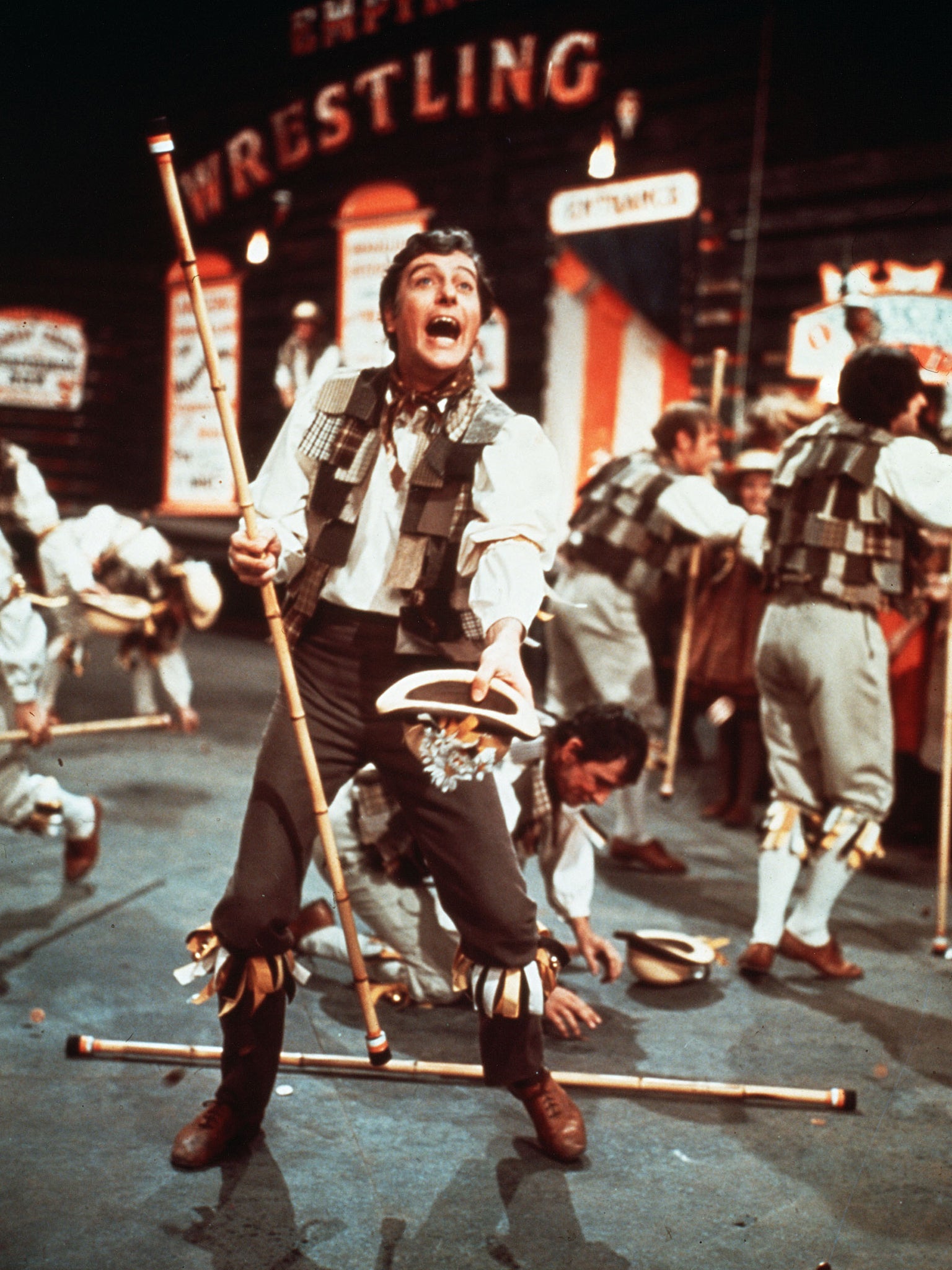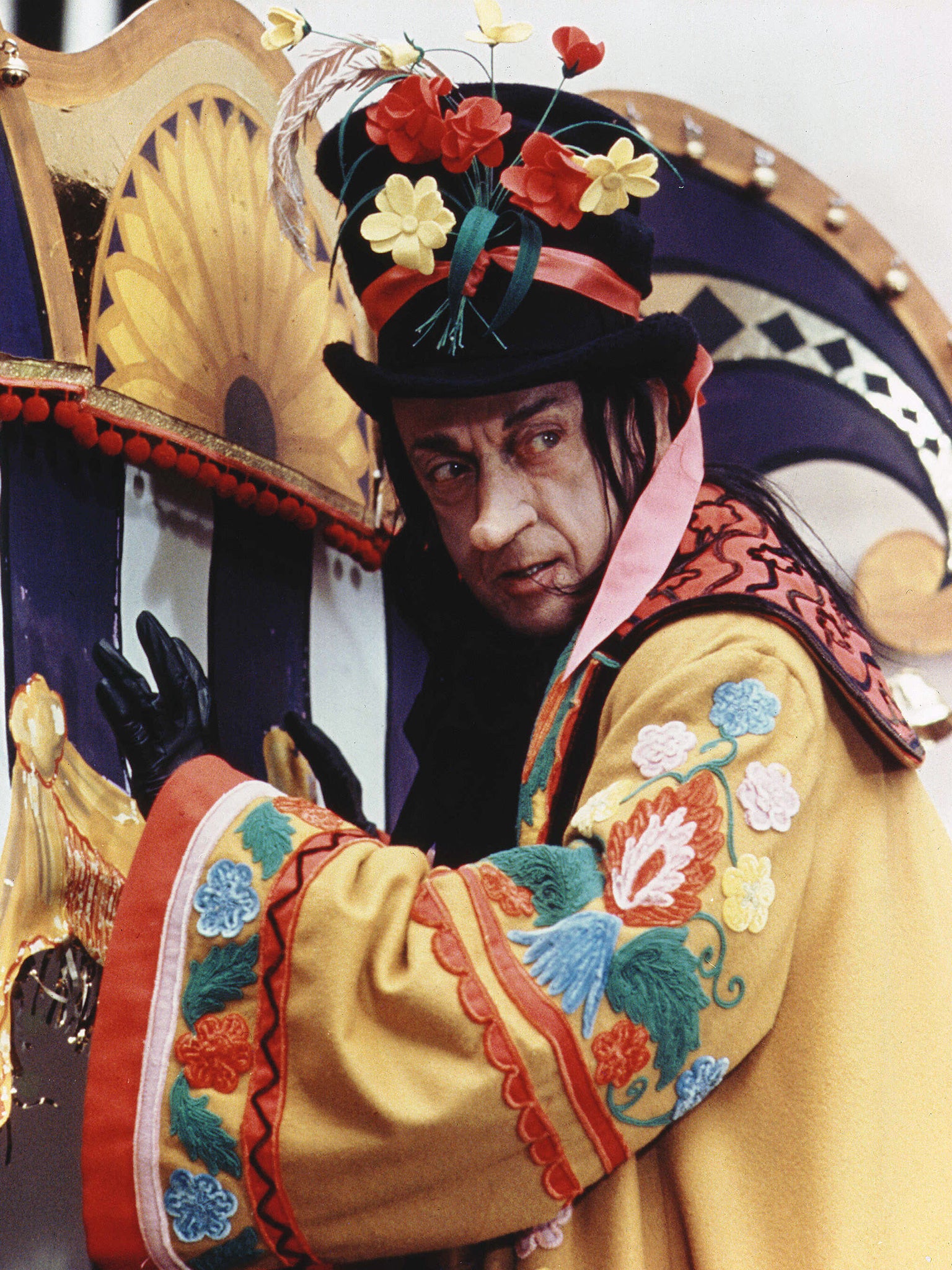10 things you didn’t know about Chitty Chitty Bang Bang
The children’s classic celebrates its 50th anniversary today (16 December). Martin Chilton unearths some strange facts about the film, which was based on a book by James Bond author Ian Fleming


Chitty Chitty Bang Bang, the much-loved movie about the magical flying car starring Dick Van Dyke, celebrates its 50th anniversary on 16 December 2018. Here are 10 things you may not know about the classic movie, which was based on a book by James Bond author Ian Fleming.
1. Chitty Chitty Bang Bang is surrounded by tragedy
In April 1961, Ian Fleming, who was a heavy smoker and drinker, had a heart attack at the age of 53 and was ordered to convalesce. It was around this time that his eight-year-old son Caspar told him: “Daddy, you love James Bond more than you love me!” The author decided to show his affection for his only child – whom he nicknamed “003-and-a-half” – by writing in longhand a series of children’s stories he first called The Magical Car.
Fleming’s tales were about a flying car restored by Caractacus Potts, an inventor and retired naval commander. The title was later changed to Chitty-Chitty-Bang-Bang, which was based on the real cars Chitty-Bang-Bang 1, 2, 3 and 4 built by the eccentric motor enthusiast Louis Zborowski in the 1920s.
Fleming suffered another heart attack on 11 August 1964, following a long lunch at Royal St George’s Golf Club in Kent. He died the next morning, on his son’s 12th birthday. Fleming never got to see the printed versions of his children’s stories, which came out in October that year.
The death affected his son deeply (“Caspar hates me and talks of little but matricide. What shall I do?” his mother Ann wrote to novelist Evelyn Waugh). On 2 October 1975, aged just 23, Caspar killed himself, taking an overdose of barbiturates at his mother’s home in Chelsea. A forlorn note in his pyjama pocket read: “If it is not this time it will be the next.”

2. Roald Dahl’s script was rejected as a ‘piece of s**t’
Roald Dahl knew Fleming well, as both had worked in the same espionage circles during the Second World War. Having adapted the Bond novel You Only Live Twice for the screen, producer Albert “Cubby” Broccoli re-hired Dahl to write the screenplay for Chitty Chitty Bang Bang. It was a move that ended in acrimony and bitterness.
Dahl’s daughter Lucy has said that her father was open about the fact that he took the job just for the high payment, and hated the experience. In 1977, Dahl told The New York Times “they took my script and never used a word”, adding that “directors are the writer’s curse”.
In a 1983 interview with The Twilight Zone magazine, he was asked about changes to his script. “Chitty Chitty Bang Bang was ghastly,” said the author. “Once you get a rotten director, or an egocentric director, you’re dead. But they pay a lot, so you take the money and run.”
According to the late director Ken Hughes, Broccoli called Dahl’s script “a piece of s**t” and asked him to rewrite the entire thing. Broccoli also decided not to invite Dahl to meet the Queen at the film’s premiere at London’s Odeon Leicester Square on 16 December 1968.
“I don’t give a damn whether we met the Royal Family or not,” Dahl wrote to his agent Swifty Lazar, adding that what he did care about was Broccoli’s behaviour and the way they’d been treated. The letter, reproduced in Storyteller: The Authorized Biography of Roald Dahl, sees Dahl defending his “worthwhile script” and stating that the whole business had made him “very cross”.
The biggest bone of contention was how many of Dahl’s own creations remained in the film. Vulgaria, the place where kidnapped children are taken, and the character of the creepy, long-nosed, net-wielding Child Catcher do not appear in Fleming’s stories and were said to have been created by Dahl. In an article for Johns Hopkins University Press, however, the late Hughes was quoted as claiming he wrote “every f**king word” of Chitty Chitty Bang Bang’s script on his portable typewriter.
“The Child Catcher was my invention – his cage and everything,” insisted Hughes.

3. Phil Collins was an extra
Before making his name with Genesis, drummer and singer Phil Collins was a child actor. He landed the role of the Artful Dodger in a West End production of Oliver! and at 13 had a role as an extra in the Beatles film A Hard Day’s Night, although you never see his face.
At 16, he was cast as an extra in Chitty Chitty Bang Bang, as one of the Vulgarian children who storm the castle at the end of the film. His scene was edited out, because the director did not like the unsightly bandage near his eye.
“I can see why I wasn’t in the final cut,” Collins later said. “I was in the last scene with all these kids, but I had this pristine white bandage round my head because I had this big cyst on the side.” Cubby Broccoli’s daughter Barbara – who was seven at the time – was also an extra in a fairground scene and, unsurprisingly, her scene was not cut.
4. Some of the English countryside was French
Scenes in Chitty Chitty Bang Bang were shot in parts of England’s most beautiful countryside and the sites have since become tourist destinations for fans of the film. The Cobstone windmill on the hill where Grandpa Potts, Caractacus and his children Jemima and Jeremy live is near the charming Buckinghamshire village of Turville. Some of the race scenes were set in Box Hill in Surrey.
However, the English weather during filming in July 1967 lived up to its unpredictable reputation. One solution was to shoot scenes in the Cote D’Azur. “If you look carefully, you’ll notice that in some places we are driving through vineyards and it doesn’t look much like the English countryside,” admitted Dick Van Dyke.

5. Morris dancing proved Dick Van Dyke’s toughest test
Robert M Sherman lived quite a life. He won a Purple Heart in the Second World War (he was one of the first American soldiers to relieve Dachau concentration camp) and was shot in the knee aged 19. He had to use a walking stick for the rest of his life. During his recuperation in Taunton, Somerset, he became interested in the local culture of Morris dancing.
When Sherman returned to America in the 1940s, his father Al, a Tin Pan Alley songwriter who had written hits for Billie Holiday and Louis Armstrong, challenged Robert and his brother Richard to try to earn a living writing songs. They became two of the most famous composers in Hollywood, winning two Oscars for Mary Poppins.
Chitty Chitty Bang Bang was their first score outside of the Disney empire. The showstopping tunes for the film included the Oscar-nominated title song, plus “Truly Scrumptious”, “Toot Sweets” and “Hushabye Mountain”. Van Dyke said that the hardest song to perform was “Me Ol’ Bamboo”, a Morris dancing-based tune devised around Sherman’s memories of England, when he had used a bamboo walking stick.
“The bamboo sticks had metal poles inside and we had to jump over them and dance with them,” Van Dyke, who was 41 at the time, said in a TV documentary about the making of the film. “Most of the dancers were 15 years younger than me and it took us 23 takes to get it right. In the last take, I only just make it. This was the hardest dance number I ever did.”
6. The wacky inventor was real
The fictional character of inventor Caractacus Potts was reminiscent of Rowland Emett, who worked on the technical aspects of the film. Emett, who drew cartoons for Punch magazine in the 1940s and 1950s, rose to fame during the 1951 Festival of Britain, when he created a real-life version of his cartoon “Far Tottering & Oyster Creek Railway”. The miniature railway was ridden by more than two million people in Battersea Park that year. His 1973 water-powered musical clock The Aqua Horological Tintinnabulator can still be seen in Nottingham.
For the film, he designed a series of machines, including the Humbug Major Sweet Machine, Clockwork Lullaby, the Little Dragon Carpet Sweeper and Hot Air Rocking Chair. “I had built a large numbers of rather pathetic inventions in the past and I believe the filmmakers could see some affinity between the character of Caractacus and myself,” said London-born Emett.
To celebrate the 50th anniversary of the film, Emett’s machines from Chitty Chitty Bang Bang are on display at the National Motor Museum in Beaulieu until November 2019.
Perhaps the most memorable invention in the movie is the Breakfast Maker, a robotic device like something out of Wallace and Gromit, that transports eggs and then cracks them open on to a plate for cooking. The fire from underneath the plate starts as soon as the eggs are in position.
“That was my favourite device,” said Van Dyke, “but the Breakfast Maker gave us the most trouble. It’s marvellous but it sometimes dumped plates on the floor and sometimes it would throw an egg across the room. We would go away while the special effects men fixed it…”
Emett was once asked if he was mad. ”If I am, it’s a rather nice state,“ he replied.
7. The son was older than the dad
“Dick Van Dyke was older than me and I was playing his dad,” Lionel Jeffries, who starred as Grandpa Potts, has pointed out. Van Dyke, who turned 93 on 13 December, was born in Missouri six months before Jeffries saw the light of day in London in June 1926.
Jeffries went bald early in life, which he blamed on his time serving with the light infantry in Burma during the Second World War. He said his hair fell out because he was sweating so much in the jungle heat. “I was the only bald student at Rada. Of course I was upset,” he said. “Tried a toupee once, too, but it looked like a dead moth on a boiled egg.”
The film also featured Benny Hill as a toy maker and Barbara Windsor had a small role, but Van Dyke most enjoyed the incongruous casting of Jeffries. “Lionel is one of the funniest men I ever met and we became close friends. But he was younger than me when he played my father and I never let him forget it,” the American star of Mary Poppins added.

8. The Child Catcher was a graceful ballet dancer
The creepy voice that drawled “I smell children…” helped make the sinister Child Catcher one of cinema’s most famous baddies. Down the years, in various stage productions, the character has been played by Paul O’Grady, Lionel Blair, Wayne Sleep and Alvin Stardust, but the definitive Child Catcher is Australian Robert Helpmann, who stole so many scenes in the 1968 film. Helpmann even took out his false teeth to give himself a gaunt, frightening look.
Helpmann was a renowned ballet star, who had danced with Anna Pavlova and Margot Fonteyn, and was later part of the Sadler’s Wells Ballet Company. In one scene in the movie, he had to race his horse-driven wagon out of the village over rough cobble stones. He lost control and the vehicle crashed, but Helpmann emerged unscathed.
“We could see he was a dancer by the way he moved with little steps,” said Van Dyke. “But when the wagon tipped over, he jumped off like a ballet dancer. I have never seen anything as graceful in my whole life.”
9. The film was James Bond for kids
As well as being based on Fleming’s book, having Broccoli as producer, and featuring a car designed by Ken Adam (whose 007 triumphs include the villain’s headquarters in Dr No), there were plenty more James Bond influences in Chitty Chitty Bang Bang.
Richard Maibaum, who wrote screenplays for a dozen Bond films, was credited as co-screenwriter, while the celebrated stuntman Vic Armstrong, who has doubled as 007 (and Indiana Jones), performed many of the stunts for Van Dyke.
Gert Fröbe, so chilling as Bond villain Auric Goldfinger, plays the temperamental, childish Baron Bomburst, while his baroness wife in the fairy-tale Bavarian kingdom is portrayed by Anna Quayle, who is Frau Hoffner in the 1967 version of Casino Royale. Desmond Llewellyn, who stars as the gadget master Q in the Bond movies, also plays an eccentric scrap dealer in Chitty Chitty Bang Bang.
“It was like a James Bond movie,” said Van Dyke, “and no expense was spared to make the sets look good.”
10. Chris Evans chauffeured a couple to their wedding in Chitty
There were reportedly six different versions of the iconic “phantasmagorical machine” – the car with the power to fly and to swim – driven by Van Dyke in the film. The cars, designed by Ken Adam, were automatic, because the actor could not drive a manual car. It had a dashboard plate from a First World War fighter plane and the colours of the floating Chitty – purple, green and white – were those of the women’s suffrage movement.
Formula One world champion Graham Hill managed to get Chitty up to 120mph during an exhibition drive at Crystal Palace in 1968. Michael Jackson (who was a Benny Hill fan) tried to buy the original car. Peter Jackson, director of The Lord of the Rings films, owns one of the versions, and radio and television presenter Chris Evans bought one for £500,000 in 2012.
Five years later, two fans of Evans’s Radio 2 show were given a fun wedding present, when the DJ chauffeured them to their ceremony in Chitty.

Join our commenting forum
Join thought-provoking conversations, follow other Independent readers and see their replies
Comments
Bookmark popover
Removed from bookmarks